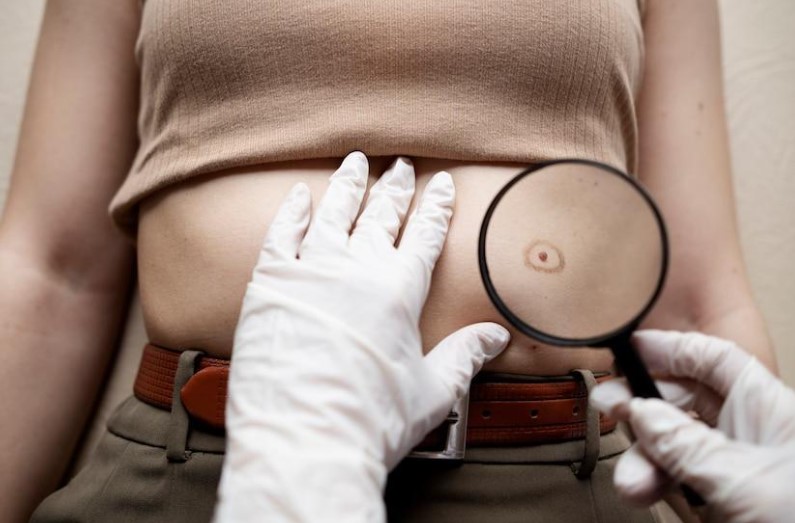
Melanoma, the deadliest form of skin cancer, can be a devastating diagnosis. However, the risk of developing this disease can be reduced with the proper knowledge and proactive measures. This article will provide essential tips and strategies to prevent melanoma and protect your skin.
Understanding Melanoma
Melanoma is a type of skin cancer that develops in the cells that produce melanin, the pigment responsible for giving the skin color. It is often caused by exposure to ultraviolet (UV) radiation from the sun or tanning beds. Melanoma can occur anywhere on the body, including areas not exposed to the sun. Understanding the risk factors associated with melanoma is essential to protect yourself better.
Risk Factors For Melanoma
Several factors increase the risk of developing melanoma. These include a history of sunburns, excessive exposure to UV radiation, a family history of melanoma, fair skin, numerous moles, a weakened immune system, and a personal history of melanoma skin cancer. By understanding these risk factors, you can take proactive steps to lower your chances of developing melanoma.
Importance Of Early Detection
Early detection is crucial for melanoma. Recognizing suspicious moles or changes in your skin can lead to early diagnosis and successful treatment. Regular skin checks and self-examination play a vital role in identifying potential melanoma. By being vigilant and proactive, you can promptly catch any abnormalities and seek medical attention.
Additionally, advanced tests like the CTC count test can be instrumental in monitoring melanoma progression. This blood test measures the number of circulating tumor cells, which can provide valuable information about the presence and spread of melanoma, helping guide treatment decisions.
Tips For Preventing Melanoma
Preventing melanoma starts with being sun bright. Limiting exposure to harmful UV rays is crucial in reducing the risk of developing this deadly disease. Here are some tips to help you prevent melanoma:
- Use sunscreen regularly: Apply a broad-spectrum sunscreen with an SPF of 30 or higher to all exposed areas of your skin, even on cloudy days. Reapply every two hours or after swimming or sweating.
- Wear protective clothing: Opt for long-sleeved shirts, wide-brimmed hats, and sunglasses with UV protection to shield your skin and eyes from the sun’s harmful rays.
- Seek shade during peak sun hours: Avoid direct exposure between 10 a.m. and 4 p.m. when the sun’s rays are the strongest. If you must be outdoors, find shade or create your own with an umbrella or sunshade.
The Importance Of Professional Skin Exams
While self-examination is essential, regular professional skin exams and cancer screening are also important. Dermatologists are trained to identify potential skin abnormalities and can thoroughly evaluate your skin’s health. Schedule regular appointments with a dermatologist to ensure your skin stays healthy and any potential issues are addressed.
Strategies For Protecting Your Skin From The Sun
Protecting your skin from the sun goes beyond sunscreen and clothing. Here are some additional strategies to keep in mind:
- Stay hydrated: Drinking plenty of water helps keep your skin healthy and hydrated, reducing the risk of sun damage.
- Avoid tanning beds: Tanning beds emit harmful UV radiation, increasing the risk of melanoma. Embrace your natural skin tone and avoid artificial tanning methods.
- Remember reflective surfaces: Sand, water, snow, and concrete can reflect UV rays, intensifying exposure. Take extra precautions in these environments by using sunscreen and protective clothing.
The Role Of Sunscreen In Preventing Melanoma
A sunscreen is a vital tool in preventing melanoma. It is a barrier between your skin and the sun’s harmful UV rays. Here are some key points to know about sunscreen:
- Look for a broad-spectrum sunscreen that protects against both UVA and UVB rays.
- Apply sunscreen generously and evenly to all exposed areas of your skin.
- Remember commonly overlooked areas such as the ears, back of the neck, and tops of the feet.
- Check the expiration date on your sunscreen and replace it if it is expired.
Recognizing The Signs Of Melanoma
Being able to recognize the signs of melanoma is essential for early detection. The ABCDE rule can help you identify potential warning signs:
- A: Asymmetry – One half of the mole does not match the other.
- B: Border – The mole’s edges are uneven, blurred, or irregular.
- C: Color – The mole has different colors or shades, such as brown, black, blue, or red.
- D: Diameter – The mole is more significant than a pencil eraser.
- E: Evolution – The mole changes in size, shape, or color.
Regular Skin Checks And Self-Examination
Regular skin checks and self-examination are crucial in detecting melanoma early. Here’s a step-by-step guide to performing a self-examination:
- Examine your body: In a well-lit room, look at your entire body, using a mirror to check hard-to-see areas.
- Inspect your face, scalp, and neck: Use a hand mirror to examine your face, scalp, and neck. Pay close attention to the areas exposed to the sun.
- Check your upper body: Look at your chest, shoulders, and arms. Remember the underarms and the tops and bottoms of your hands.
- Examine your lower body: Check your legs, including the front, back, and sides. Look at the spaces between your toes and the soles of your feet.
Conclusion: Taking Proactive Steps To Prevent Melanoma
Preventing melanoma requires a combination of knowledge, awareness, and proactive measures. Understanding the risk factors, incorporating sun protection strategies, and conducting regular self-examinations can lower your risk of developing this deadly skin cancer. Remember, early detection is critical, so stay vigilant and consult a dermatologist if you notice any suspicious changes in your skin. Let’s empower ourselves with the knowledge to protect our skin and prevent melanoma.
